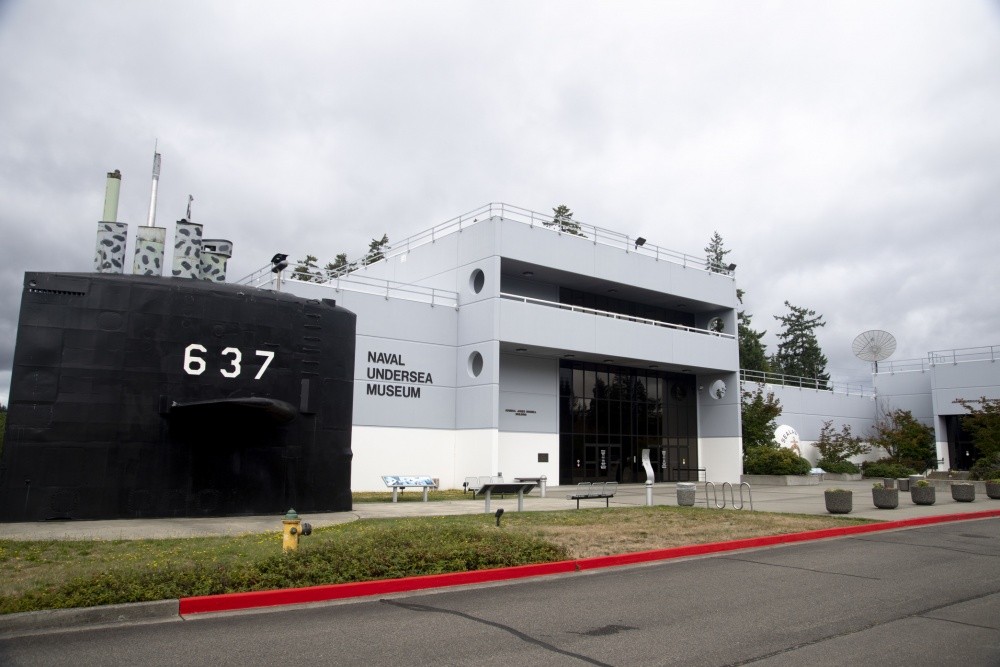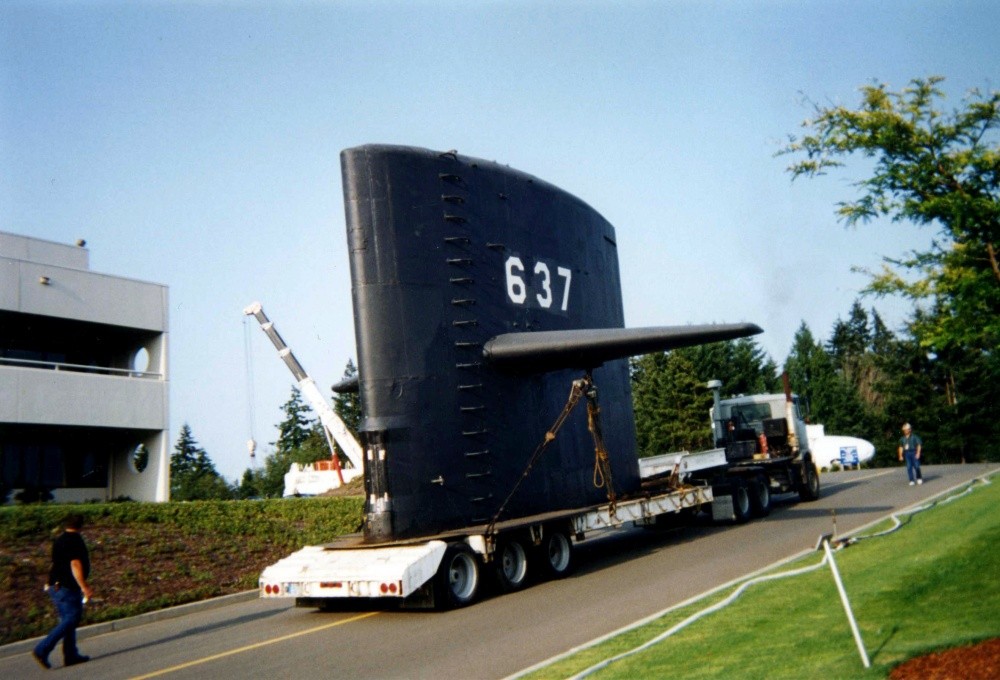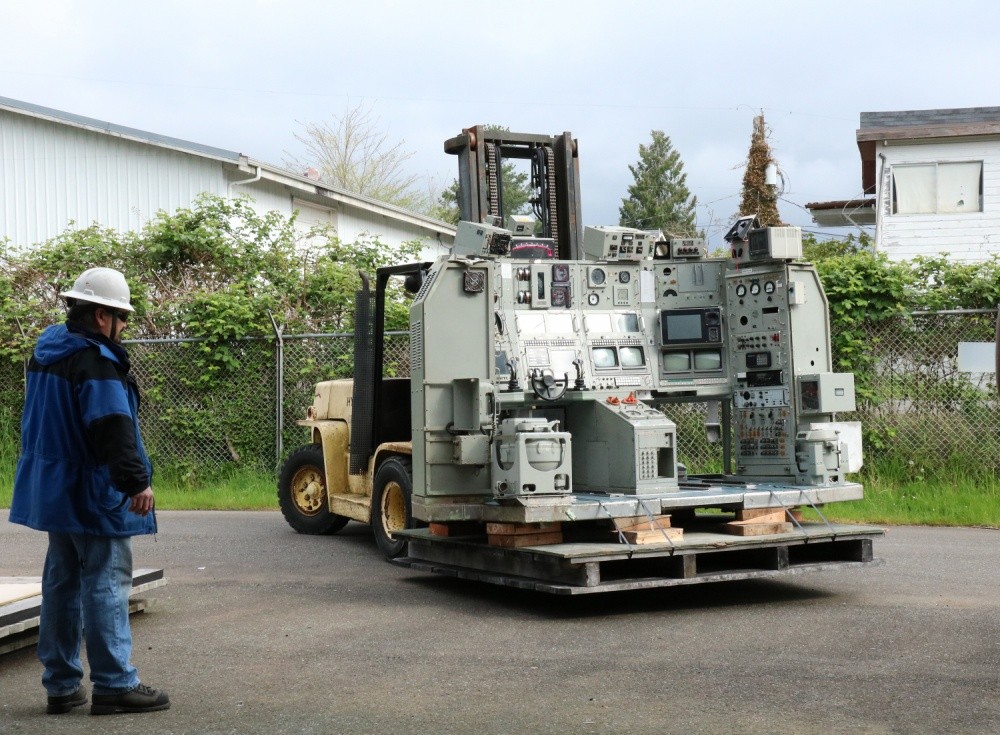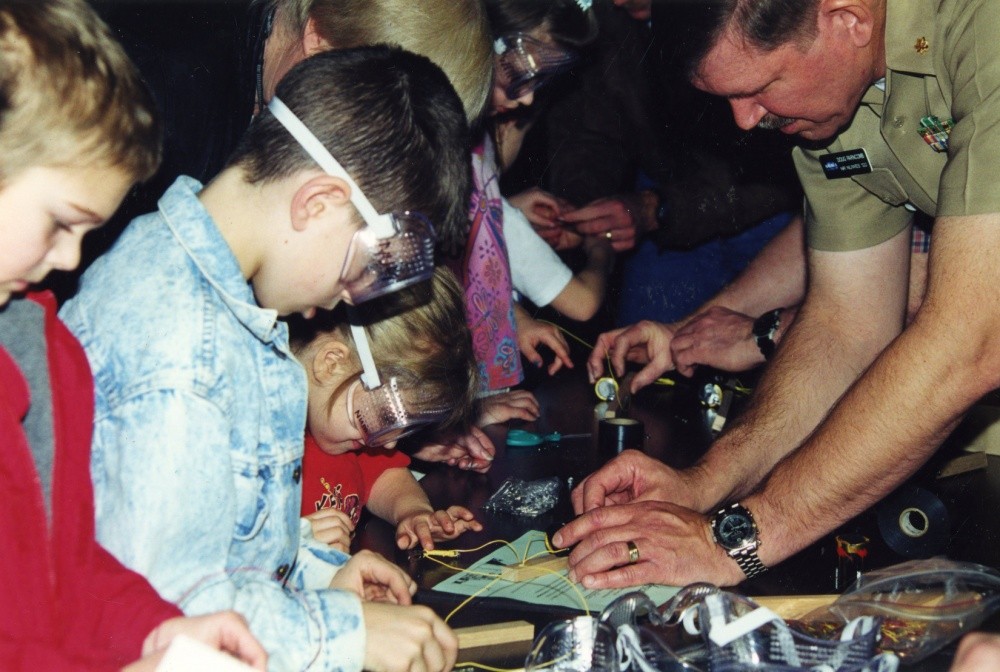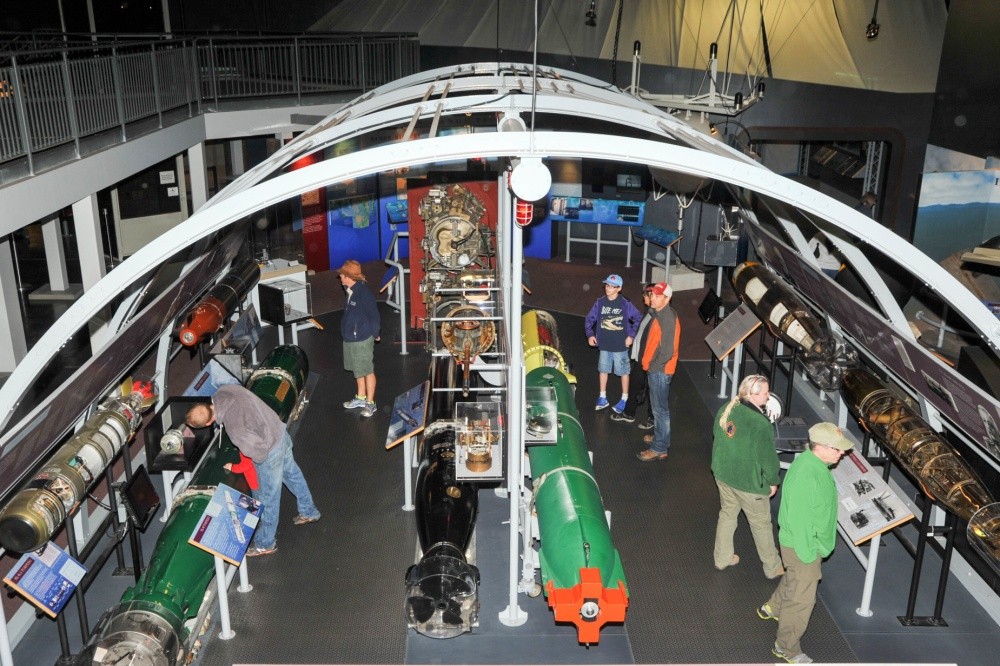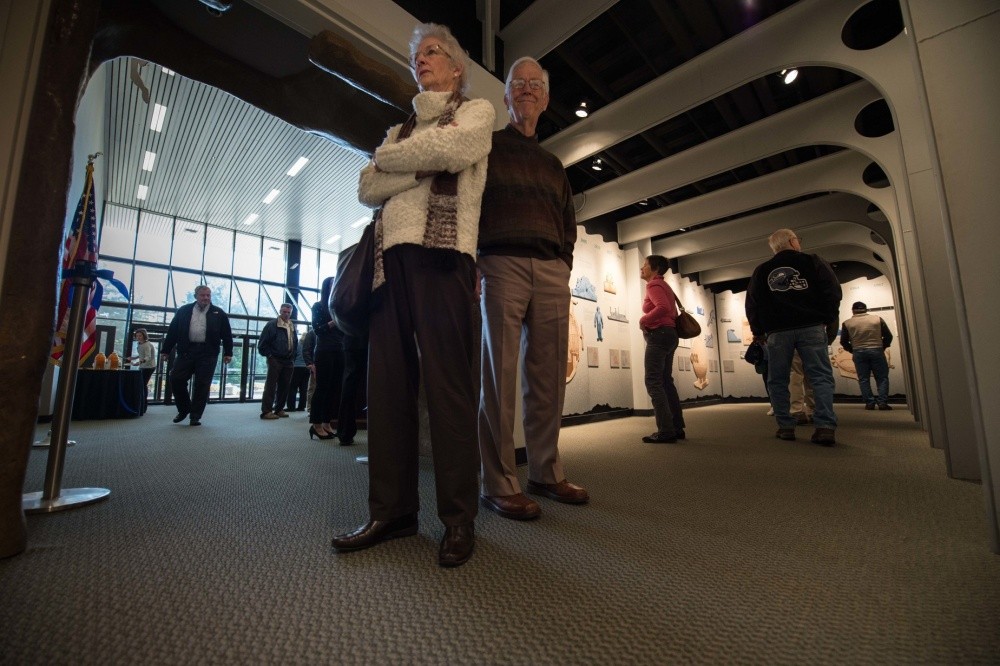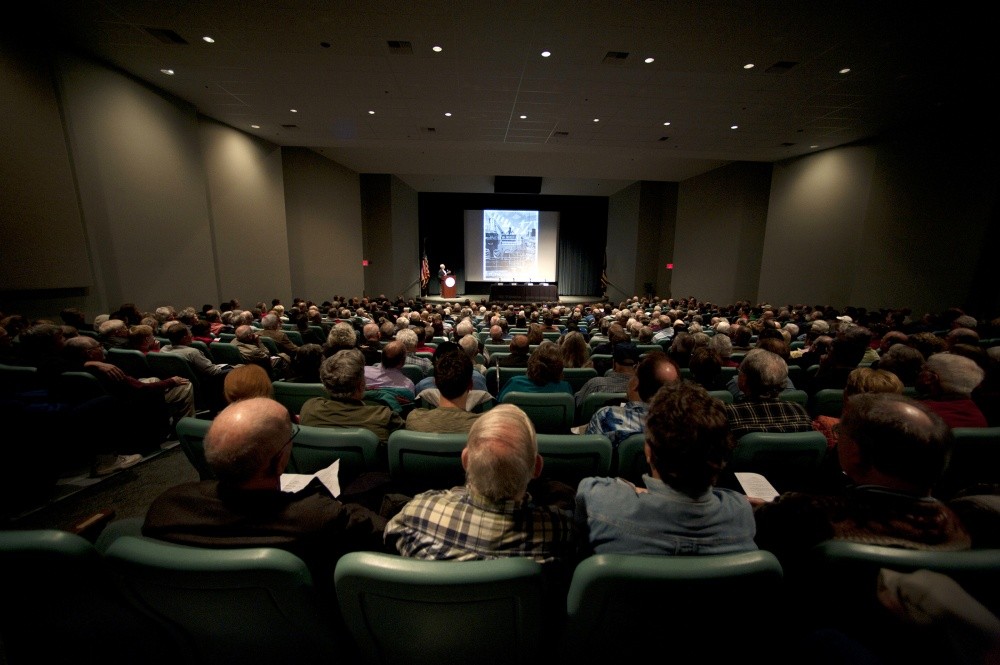Story by Mass Communication Specialist 2nd Class Allen Lee, Navy Public Affairs Support Element, Det. Northwest.
The Undersea Museum opened as a preview center in 1991, and proceeded to open as a fully operational museum in 1994, with the goal of keeping the community connected and educated with its undersea Navy.
“The undersea Navy is something the majority of people in our country are not familiar with,” said Olivia Wilson, operations manager for the USNUM. “We want to provide the community with a basic understanding of what the Navy does undersea through exhibits and educational opportunities, free of charge.”
KEYPORT, Wash. − The sail from Cold War submarine USS Sturgeon (SSN 637) arrived at the U.S. Naval Undersea Museum in August 1995 for permanent display, after the submarine was recycled through the Puget Sound Naval Shipyard’s submarine recycling program. USS Sturgeon was the lead ship in a class of 37 fast attack submarines that conducted missions during the Cold War. U.S. Navy photo. (Released)
Some of the museum’s biggest attractions include the acquisition of the attack submarine USS Sturgeon’s (SSN 673) sail, located in front of the museum, and the Greenling control room that was constructed with real equipment from the Cold War-era fast attack submarine USS Greenling (SSN 614).
“We’re very proud of all of the artifacts,” said Wilson. “It’s a great way to show our visitors the history of the undersea Navy. It’s been a long road, but we’re continuing to grow and bring in new exhibits and programs. We’re trying to keep moving forward and improve on what we can provide for the community.”
KEYPORT, Wash. − The control room equipment of nuclear-powered submersible NR-1 joined the U.S. Naval Undersea Museum’s artifact collection in May 2018. NR-1 carried out classified and unclassified missions for almost 40 years as the Navy’s only nuclear submersible. The highly significant acquisition was made possible by the Puget Sound Naval Shipyard, which carefully removed and reassembled the equipment during the recycling process. U.S. Navy photo. (Released)
The museum also offers hands-on learning opportunities for children in the local community through the museum’s educational programs.
“Over the life of the museum, we’ve grown our educational offerings to weekly and monthly science, technology, engineering, and mathematics (STEM) programs,” said Valerie Johnson, a USNUM educator.
“We’ve partnered with regional schools and community organizations to enhance K-12 experiences, both onsite with Navy STEM (science, technology, engineering and math) days and offsite with Camp Create. We’ve expanded our outreach capabilities throughout Puget Sound and are serving roughly 10,000 learners a year.”
Since 1999, the museum has been the venue for more than 7,000 retirements, changes of command, meetings, trainings, field trips and other education programs.
“We’re more than just a museum,” said Wilson. “We provide an auditorium for local, state and federal entities to rent out for whatever events they have going on. We have about 20,000 people a year using our facility spaces.”
The museum will host an event August 10, 2019, to celebrate its 25th anniversary.
KEYPORT, Wash. − The U.S. Naval Undersea Museum hosted its first Discover Engineers “E” Day program in February 1999. The annual family program, which draws several hundred participants each year, celebrates National Engineer’s Week. Now in its 21st year, the event remains true to its original concept: a day of hands-on engineering activities that engage the whole family. U.S. Navy photo. (Released)
"The USNUM was made possible through the determination of a core group of founders who recognized the need to share the U.S. Navy's important undersea history,” said Lindy Dosher, museum director of the USNUM. “Establishing the museum was not easy, but after decades of work their dream was realized. In the years since USNUM became a professional museum institution, it has accomplished many things. We’ve shared award-winning educational programs, been accredited by the American Alliance of Museums twice, managed a diverse and complex artifact collection with the highest standards in the industry, developed a robust and engaging exhibit program, and served as a critical asset to our Navy and local community. We have had a great 25 years, and the staff and I look forward to seeing what more we can do in the next 25.”
The Naval Undersea Museum is one of the largest maritime museums on the West Coast and holds the country's most comprehensive collection of undersea-related artifacts and documents. Through education programs and an 18,000-square-foot exhibit hall, the museum connects visitors to more than 150 years of naval undersea history and technology.
KEYPORT, Wash. – Guests observe exhibits at the Naval Undersea Museum, October 10, 2015, during Deep Submergence Rescue Vehicle (DSRV) Day. DSRV Day represents the one-year anniversary of the DSRV arriving at the museum. U.S. Navy photo by Mass Communication Specialist 3rd Class Charles D. Gaddis IV. (Released)
The Naval History and Heritage Command, located at the Washington Navy Yard, is responsible for the preservation, analysis, and dissemination of U.S. naval history and heritage. It provides the knowledge foundation for the Navy by maintaining historically relevant resources and products that reflect the Navy's unique and enduring contributions through our nation's history, and supports the fleet by assisting with and delivering professional research, analysis, and interpretive services. NHHC is composed of many activities including the Navy Department Library, the Navy Operational Archives, the Navy art and artifact collections, underwater archaeology, Navy histories, ten museums (including USNUM), USS Constitution repair facility, and the historic ship Nautilus.
For more about the Naval History and Heritage Command, visit www.history.navy.mil and for more on the U.S. Naval Undersea Museum, visit https://www.history.navy.mil/content/history/museums/undersea.html.
KEYPORT, Wash. – Visitors explore the new USS Thresher (SSN 593) exhibit at Naval Undersea Museum, December 3, 2012. Thresher was the Navy's most advanced submarine when it sunk April 10, 1963, with all hands onboard. This tragedy became a turning point for the Navy to establish the Submarine Safety (SUBSAFE) Program and the Deep Submergence Systems Project. U.S. Navy photo by Mass Communication Specialist 3rd Class Seth Coulter. (Released)
KEYPORT, Wash. − In November 2012, the U.S. Naval Undersea Museum hosted a special presentation by the Central Intelligence Agency’s (CIA) Historical Collections Division, which detailed a declassified secret mission carried out by the submersible Trieste II (DSV 1). The public program drew a full crowd that filled the museum’s auditorium past its 450-seat capacity. U.S. Navy photo. (Released)

